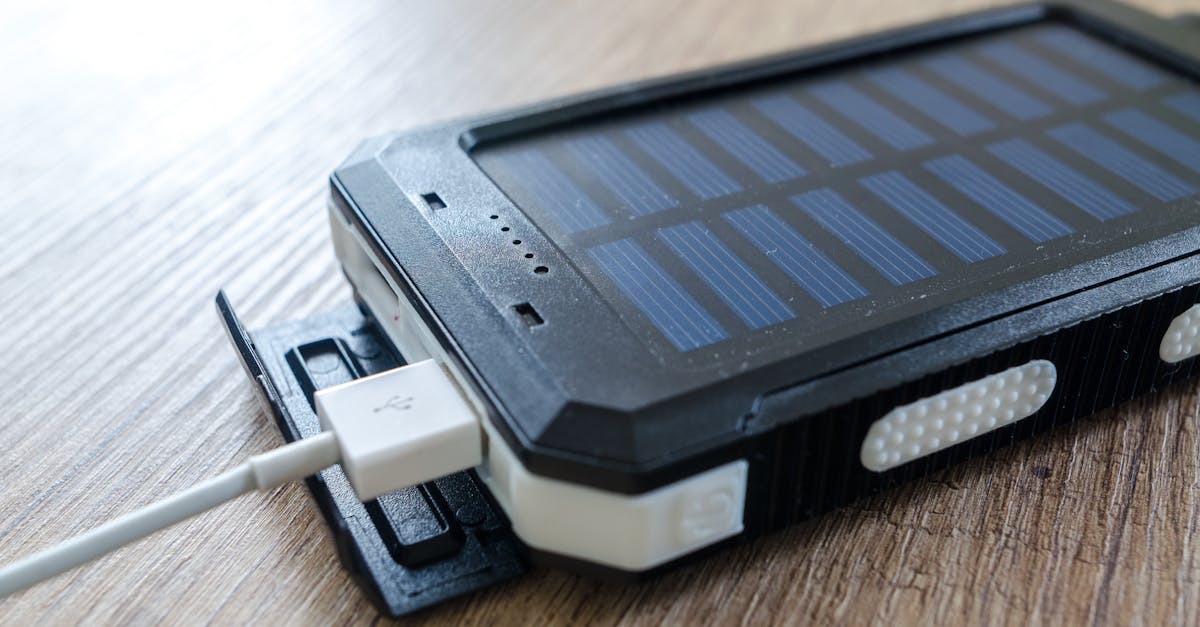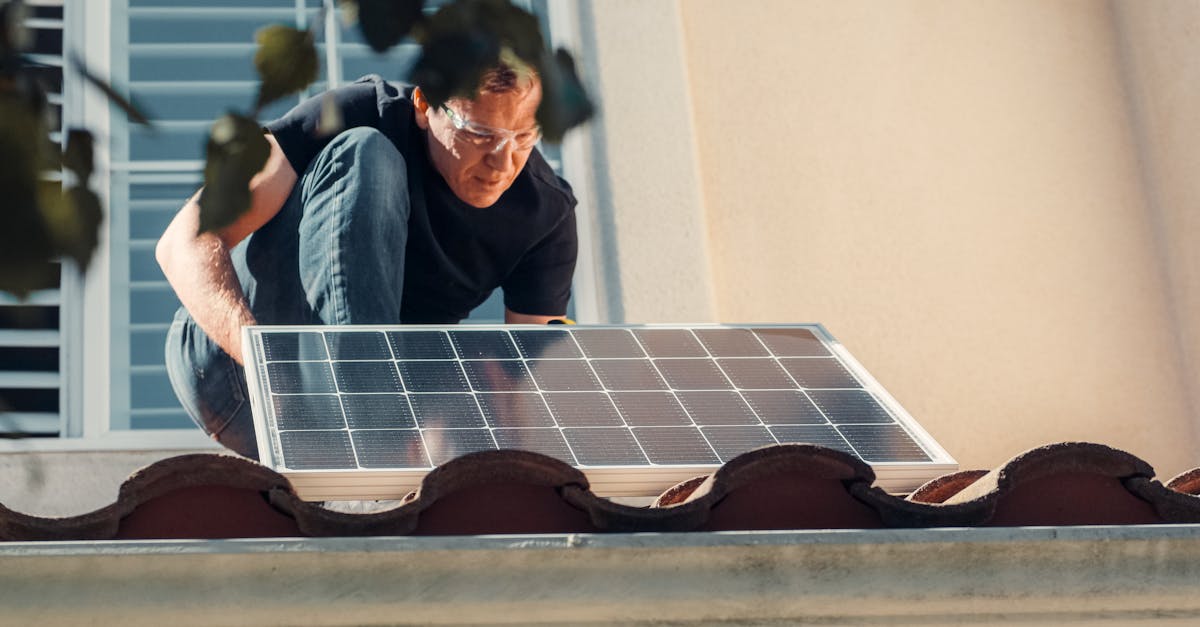
Grid Interaction
Grid interaction plays a crucial role in the overall efficiency and effectiveness of solar energy systems. When solar panels generate more electricity than a household requires, the excess power can be fed back into the grid. This process not only contributes to the local energy supply but also provides a potential financial return for homeowners, especially when paired with solar battery storage. By storing energy during peak production times, a household can utilise this stored electricity during periods of low sunlight or increased demand, leading to reduced reliance on the grid.
The integration of solar battery storage enhances a home's interaction with the grid significantly. During times of low demand or when energy prices rise, stored energy can be used, allowing homeowners to curb energy costs. Additionally, this capability can improve energy security, ensuring access even during power outages. The dual benefit of selling excess energy back to the grid and utilising stored energy can lead to a more resilient home energy system, making solar battery storage an attractive investment for many.
Selling Excess Energy Back to the Grid
When homeowners generate more electricity from solar panels than they consume, they often have the opportunity to sell excess energy back to the grid. This process can provide an additional revenue stream, allowing residents to earn money rather than simply giving away their surplus energy. A well-designed solar battery storage system can complement this setup by storing unused energy for later use, maximizing the financial returns from a solar investment.
The regulations and compensation rates for selling excess energy can vary based on local policies and utility companies. Homeowners should investigate available options to ensure they understand potential benefits. Pairing solar panels with solar battery storage not only reinforces energy independence but can also optimise savings through effective energy management. Balancing consumption with the ability to sell surplus power allows for greater efficiency and long-term sustainability.
Different Types of Batteries
When considering solar battery storage, homeowners typically encounter two primary types of batteries: lithium-ion and lead-acid. Lithium-ion batteries are renowned for their higher energy density, longer lifespan, and greater efficiency. These batteries enable better utilisation of the stored energy, allowing for a more effective power supply when solar generation is low. The compact design of lithium-ion batteries also makes them easier to space and integrate into existing home systems, appealing to those with limited installation areas.
In contrast, lead-acid batteries, although more affordable upfront, often come with shorter lifespans and lower overall efficiency compared to their lithium-ion counterparts. While they may be a more budget-friendly choice for some, their larger size can pose challenges in terms of installation and space. Furthermore, lead-acid technologies typically require more maintenance, making them less convenient for homeowners seeking a set-and-forget solution with their solar battery storage. Understanding these differences helps in making an informed choice tailored to individual needs and circumstances.
Comparing LithiumIon and LeadAcid
When considering solar battery storage, lithium-ion and lead-acid batteries emerge as two primary options. Lithium-ion batteries are known for their high energy density and longer lifespan, often providing a cycle life of over 5,000 to 10,000 cycles. This translates into less frequent replacements and lower long-term costs. Their efficiency in charge and discharge rates makes them a popular choice among homeowners looking to maximise the benefits of their solar energy systems.
In contrast, lead-acid batteries have been around for much longer and are generally more affordable upfront. While their initial investment might seem appealing, lead-acid options typically have a shorter lifespan, ranging from 1,000 to 3,000 cycles. This limitation can lead to higher costs over time due to the need for more frequent replacements. Moreover, their lower energy density means that larger installations may be required to achieve similar performance levels when compared to lithium-ion alternatives, impacting the overall space and installation considerations for solar battery storage.
Space and Installation Requirements
When considering solar battery storage, evaluating the available space in your home is crucial. Batteries vary in size, and their installation could necessitate adaptations in existing layouts. The chosen location should ensure easy access for maintenance and monitoring, while also being sheltered from extreme weather conditions. Proper ventilation is important to prevent overheating, especially for models that generate heat during operation.
Installation requirements extend beyond mere space considerations. Homeowners must assess whether their electrical system can support battery integration alongside their solar panels. Consulting a qualified professional is advisable, as they can provide insight into wiring needs and compatibility with existing solar systems. This preparation ensures that the solar battery storage operates efficiently and safely within the household's infrastructure.
Assessing Your Home's Capacity
Before investing in solar battery storage, it is crucial to assess your home’s capacity to integrate such a system effectively. Consider the size of your roof space, the orientation and pitch, as these factors impact solar panel efficiency. Evaluating the existing electrical system's compatibility also plays a significant role. Homes with older wiring may require upgrades to support battery storage capabilities.
Another factor to consider is the energy consumption patterns within your household. An analysis of daily energy usage will help determine the appropriate size of the solar battery system required. Understanding peak usage times and fluctuations in demand can guide the selection of the most effective battery storage solution. Careful planning ensures that the solar battery storage complements your energy needs and maximises the benefits of your solar panel installation.
FAQS
What is the main benefit of having battery storage with solar panels?
The main benefit of having battery storage with solar panels is that it allows you to store excess energy generated during the day for use at night or during periods of low sunlight, maximising your energy independence and potentially reducing electricity bills.
Can I sell excess energy back to the grid if I have a battery storage system?
Yes, you can sell excess energy back to the grid if you have a battery storage system, but the specific arrangements and financial benefits may vary based on local regulations and your energy provider's policies.
What types of batteries are commonly used for solar energy storage?
The most commonly used types of batteries for solar energy storage are lithium-ion and lead-acid batteries, each with its own advantages and disadvantages in terms of lifespan, efficiency, and cost.
How do lithium-ion batteries compare to lead-acid batteries for solar storage?
Lithium-ion batteries typically have a longer lifespan, higher efficiency, and faster charging times compared to lead-acid batteries, making them a more efficient option for solar energy storage despite their higher initial cost.
What factors should I consider for space and installation requirements of battery storage?
When assessing space and installation requirements for battery storage, consider the available space in your home, the size of the battery system, ventilation needs, and any local building codes or regulations that may apply.
